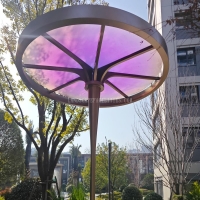Welcome to the website for landscape facilities products and knowledge.
What are the pest resistance benefits of certain materials in landscape tables?
When selecting outdoor furniture, pest resistance is a crucial factor often overlooked. Certain materials used in landscape tables offer natural or enhanced resistance to pests, ensuring longevity and minimal maintenance.
1. Teak Wood
Teak is renowned for its natural oils that repel insects like termites and beetles. Its dense grain structure also deters moisture absorption, preventing rot and fungal growth.
2. Recycled Plastic
High-density polyethylene (HDPE) and other recycled plastics are impervious to pests. Unlike wood, they won’t attract termites or carpenter ants, making them a low-maintenance option.
3. Powder-Coated Metal
Aluminum and steel tables with powder-coated finishes resist rust and insect damage. The smooth surface leaves no room for pests to burrow or nest.
4. Composite Materials
Combining wood fibers and plastics, composite materials mimic the look of wood while being pest-resistant. They’re immune to rot and insect infestations.
5. Concrete
Though heavy, concrete tables are virtually pest-proof. Their solid structure and lack of organic matter make them unappealing to insects.
By choosing pest-resistant materials, homeowners and businesses can enjoy durable, eco-friendly landscape tables that withstand the elements and reduce the need for chemical treatments. Investing in these materials ensures long-term beauty and functionality for outdoor spaces.
Related search:

Recommendation
Metal frame with gradient color acrylic combined with high-end shading landscape facilities